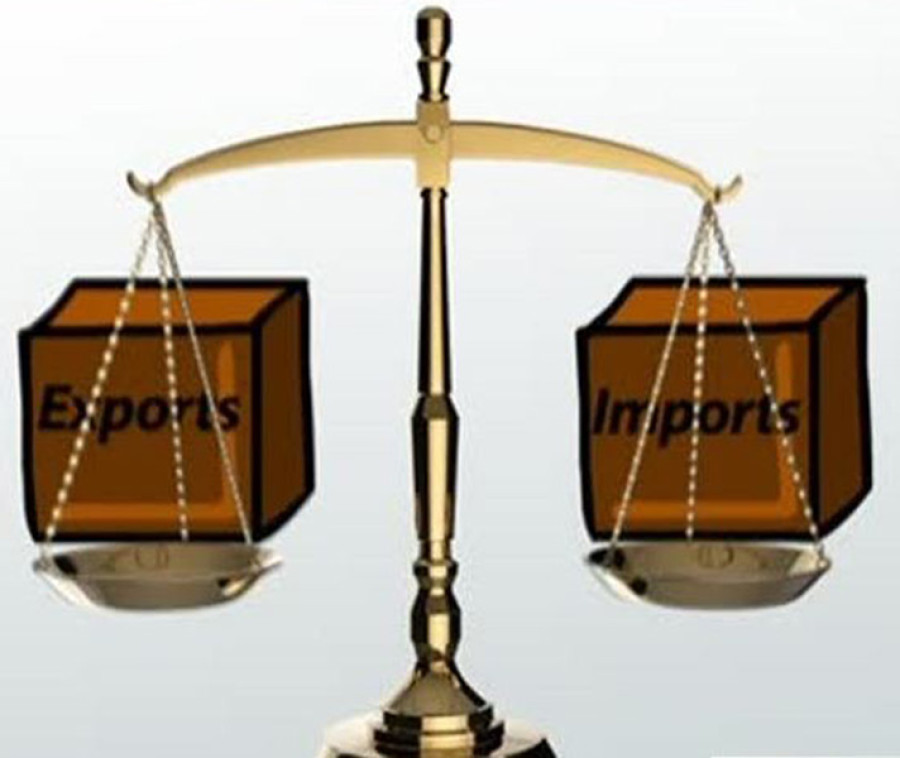Money
Trade deficit soars to 26pc of GDP in Q3
Nepal’s trade deficit soared to 26 percent of the country’s gross domestic product (GDP) in the first nine months of the current fiscal year, as export growth slowed and imports jumped. During the same period last year, the trade deficit was recorded at 22 percent of the GDP.
Nepal’s trade deficit soared to 26 percent of the country’s gross domestic product (GDP) in the first nine months of the current fiscal year, as export growth slowed and imports jumped. During the same period last year, the trade deficit was recorded at 22 percent of the GDP.
The Central Bureau of Statistics (CBS) has estimated the country’s production of goods and services to amount to Rs2,599 billion in the current fiscal year. The GDP growth rate is expected to reach a 20-year high of 6.9 percent in 2016-17, the CBS said.
According to the Trade and Export Promotion Centre (TEPC), Nepal’s trade deficit stood at Rs670.76 billion during the third quarter of 2016-17, up from Rs474.28 billion in the same period in 2015-16.
Former commerce secretary Purushottam Ojha said a soaring trade deficit coinciding with a high GDP growth rate showed that the country was experiencing non-sustainable growth. “It clearly indicates that the GDP growth is a result of an increase in the production of mainly non-exportable goods,” Ojha said.
During the review period, export earnings inched up 9.9 percent to Rs55.26 billion while the country’s import bill surged 38.4 percent to Rs726.02 billion.
Ojha blamed the inability of the manufacturing sector to produce goods to replace foreign imports for the steep rise in imports. “If imports could have been replaced by domestic goods, the import bill would have fallen notably along with a rise in the GDP growth rate.”
Exports as a percentage of the projected GDP amount to a mere 2.1 percent while imports account for 28 percent of the GDP.
Although the rise in the GDP is likely to increase the annual per capita income, the swelling trade deficit presents a dismal picture of the overall performance of the economy, experts said. “The rising trade deficit has multiple implications in the economy including a fall in foreign exchange reserves, slow growth in employment opportunities and poor performance of the manufacturing sector in particular,” Ojha said.
Nepal has been paying for its imports mainly with remittance sent home by migrant workers. However, a slowed growth in remittance inflows in recent days have raised concerns about financing the huge trade deficit that the country has been running up.
According to TEPC records, fuel is the country’s top import. Nepal imported petroleum products valued at Rs87.38 billion, representing 12 percent of the total value of product purchases from other countries.
Iron and steel (Rs76.9 billion) and vehicles and parts (Rs63.29 billion) were the second and third largest imports respectively.
Meanwhile, woolen carpets were Nepal’s top export with shipments totalling Rs5.65 billion. With export earnings of Rs4.81 billion and Rs4.27 billion, yarns and iron and steel products respectively were the second and third largest exports.




 11.12°C Kathmandu
11.12°C Kathmandu













